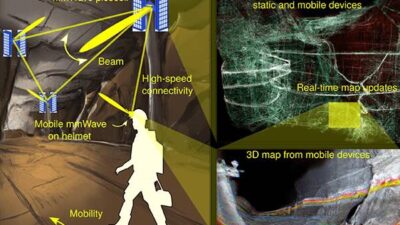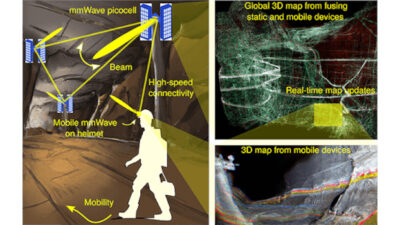'Control valves are devices with movable, variable, and controlled internal elements for modulating fluid flow in a conduit." (See CE, March 1997, Back to Basics: "Control Valves—Sizing, Design, Characteristics," p. 116.)Most people may agree with the definition of a control valve, yet there is renewed interest in European Mandatory Directives surrounding control valve terminology.
Trends in Control Valves
Pushbuttons/LCD screens
More value in Internet
Remote diagnostics
‘Control valves are devices with movable, variable, and controlled internal elements for modulating fluid flow in a conduit.’ (See CE , March 1997, Back to Basics: ‘Control Valves-Sizing, Design, Characteristics,’ p. 116.)
Most people may agree with the definition of a control valve, yet there is renewed interest in European Mandatory Directives surrounding control valve terminology. Enhancement to the aerodynamic standard, revisions to the hydrodynamic noise prediction standard, inspection and routine testing, and explosion-proof certification, have come to the forefront of industry awareness.
‘In May 2002, important European-based standards will become effective. All standards harmonize manufacturers throughout Europe and this creates U.S. interest in not being excluded,’ says Galin Wilke, Fisher Controls International (Marshalltown, Ia.) marketing manager.
Solenoid valves and limit switches were most commonly specified accessories
Some 1,500 Control Engineering readers were polled, in part, to determine which factors are most important in their purchase decision for control valves. Three hundred-two completed the survey for a response rate of 20%.
CE ‘s objectives were to: examine what control valve devices are used, examine what manufacturers the respondents purchased control valves from in the past 12 months, and determine the importance of selected features in the purchase decision process.
Nearly all, 95%, of the survey respondents recommend, specify, and/or purchase control valves. Of those 95%, upon which the rest of the results are based, 81% recommend, specify, and/or buy control valves for in-plant requirements and 20% do so for OEM requirements.
Reliability, low maintenance and repeatability wereleading features requested on control valves.
Does your valve work?
Although fieldbus instrumentation still surrounds the industry, manufacturers are interested in getting the most out of diagnostics.
‘People don’t want to maintain equipment unnecessarily, yet manufacturers have a long way to go to provide more information to users,’ says Mr.Wilke.
‘Some people say that pushbuttons and LCD screens on valves are dangerous, but others are beginning to make the change on what is best,’ he adds.
As businesses become more and more competitive, time between scheduled shutdowns is longer. Thus, it becomes more critical to assess the equipment to be maintained.
For this reason, on average, reliability, low maintenance and repeatability were the leading features respondents wanted in control valves. (See graph.)
When asked what accessories respondents most commonly specified with control valves, on average, solenoid valves (74%), limit switches (62%), and positioners (56%) were requested most often. (See graph.)
It is known that valves are manufactured from practically every metal, metallic alloy, and engineered plastics or polymers, ( CE, March 1997). European Directives say the classification of the valve itself depends on the type of fluid passing through the valve, the pressure and the diameter.
As for the media types most often handled by control valves, respondents identified liquids at 84%, air/gases at 79%, and slurries at 30%.
When asked if a digital network was used in the valve applications, Hart, 30%; Modbus, 18%; and Foundation Fieldbus at 14% were applied most often by respondents. (See graph.)
Hart and Modbus most used applications on digital networks.
Future of control valves
One hundred fifty-two respondents purchased a total of $15,304,131 of control valves in the past 12 months for an average of $100,685 per respondent.
Although 21% of the respondents anticipate an increase in their purchase of control valves in the next 12 months, everyone has different ideas of what the competitive impact will have on the industry.
‘Issues in the industry vary with who you talk to,’ says Fisher Controls’ Mr. Wilke.
The overall responses, however, are that users can expect more value from the Internet to exchange engineering data and have more efficient interfaces with suppliers, rather than to just place purchase orders. According to Mr. Wilke, however, it is not clear what direct role the Internet will have on control valve efficiency and price level.
Control valve products
For more information on control valves, visit www.controleng.com/freeinfo . For a broader listing of control valves manufacturers, go to the Control Engineering Buyer’s Guide at www.controleng.com/buyersguide .
Characterized seat control valve
Marlborough, Mass. -Characterized seat control valves are ball valves that consists of a standard sintered stainless steel seat, impregnated throughout with TFE or graphite, and laser cut to provide modulating control. The valves accommodate high-pressure drops for liquids and steam; 500 psi for liquids and 300 psi for steam. High rangeability is dictated by the shape of the characterized seat and offers controllable flow through 95% of travel. It is said that the compact size takes less space, fits easily into existing lines without straining piping, and generally about 30% lighter than globe valve assemblies. www.worcestercc.com
Worcester Controls
Spring-load prevents atmosphere leaks
Solon, O. -Swagelok 60 Series ball valves prevent leaks to the atmosphere with a live-loaded stem seal. Spring-loaded valve seats exert constant pressure against the ball to provide a reliable seal, even in low-pressure conditions. The ball valves have a two-piece chevron, live-loaded packing which helps prevent inboard and outboard leakage by compensating for changes in pressure and temperature. Available end connections include TS sanitary fitting, tube butt weld, VCO and VCR connections. Valves are available in sizes from 1/4 to 2 in., and 6-25 mm, with a variety of handle and vent port options, as well as remote actuation options. www.swagelok.com
Swagelok
Orbit TriAx valves
Marshalltown, Ia. -Fisher Controls International announces a marketing agreement with Orbit Valve Co. that combines Fisher power actuators with the Orbit TriAx rotary process valve. The power-actuated version of the TriAx valve is used for high-pressure or high-temperature on-off applications requiring tight shutoff. The design features a triple-axis sealing system that gives bubble tight, bi-directional shutoff without the use of elastomers. The valve’s 3-24 in. sizes are available in ANSI Class 150 or 300 ratings with face-to-face raised flange dimensions meeting ANSI, API, and ISO specifications. www.fisher.com
Fisher Controls Intl.
Valve utilizes actuator yoke
Foxboro, Mass. -The FoxPak range of valves utilizes a special actuator yoke with internal porting and integral valve bonnet. Direct mounting of the positioner to the yoke is accomplished via two bolts with o-ring seals for the ports. This is said to eliminate the cost of tubing and fittings, and typical leaks. The yoke is designed to accept a NAMUR mounted solenoid. The valve also accepts a range of Foxboro analog, digital, and intelligent positioners. The FoxTop valve, like FoxPak, utilizes a direct mount positioner, but can be mounted on other manufacturers’ linear valves. www.foxboro.com
The Foxboro Co.
Valve facilitates drainage
Irwin, Pa. -The flush tank ball valve’s pad radius facilitates efficient drainage and reduces the pocket area above the ball. Series 5 valve includes Adjust-O-Seal for in-line seat adjustment and features swing- out/lift-out capabilities. This is said to improve stem packing, provide stronger handles and stems, improved optional body cavity fillers, and interchangeability between seats. Valves are available with aseptic CIP/SIP options or in clean steam models. www.pbmvalve.com
PBM, Inc.
Custom configurable valves
Cedar Grove, N.J .-Plast-O-Matic Valves Inc. introduced its compact Teflon bellows solenoid valve, said to be customizable for most liquid applications. The valve is pressure balanced, and rated for inlet pressures to 140 psi. Depending on the orifice size specified, back pressure is rated up to 70 psi. Customizable valve attributes include size, shape, mounting, body material, port configuration, piping connections, and coil type. Body materials include HDPE, Teflon, CPVC, polypropylene, PVDF and PVC, but construction can be of any machinable thermoplastic or thermoset material compatible with the temperatures generated by the solenoid coil. www.plastomatic.com
Plast-O-Matic
Flow valves for hydraulic use
Mentor, O. – Series D3 directional valves are direct operated four-way valves, available in two- or three-position configurations. The valves are designed for manifold mounting in industrial and mobile hydraulic applications requiring high cycle rates, long life, and high efficiency. They also conform to NFPA’s DO5 pattern. Valve flows up to 150 lpm and pressure ratings up to 345 bar are available. Solenoid-operated models feature ac or dc coils, monitor switch, and surge suppression options. The valves include CSA-approval and UL-recognition for most models. www.parker.com
Parker Hannifin Corp.
Intelligent solenoid valves
Irvine, Calif. -The stainless steel version of Type 6223 Series internally piloted, proportional solenoid valves are available in orifice sizes from 1/16-1 in. The continuous control solenoid valve consists of the proportional valve and the plug-on electronic control unit mountable in any position. The valve is self-closing in case of power failure and has a double o-ring seal that protects the coil and valve assemblies from moisture and corrosion for longer life. Applications include general machinery, process control, cooling systems, food and beverage, and medical systems. The electronic control unit of the Type 6223 valve is integrated into the DIN 43 650 A-plug and is available in a DIN-rail mounting configuration. www.burkert.com
Burkert USA
Self-draining valve
Cincinnati, O. – MK98 Series are self-draining, modulating control valves with pneumatic actuator and high flow capabilities for use on sanitary steam, gas, and liquid services for the pharmaceutical industry, and other sanitary process applications. MK98 valves are crevice free to maintain sanitary conditions whether mounted horizontally or vertically. The body and stem of the valve is constructed from 316L stainless steel and the actuator and yoke is epoxy-coated steel with shatterproof covers on the yoke. Available in 1/2, 3/4 and 1 in. sizes, the MK98 comes in a wide variety of end connections including quick disconnect sanitary fittings, DIN-sanitary, or butt weld. www.jordanvalve.com
Jordan Valve
For additional information on control valves, see related article ‘Three Faces of Control Valves’ p.83 in this issue.



